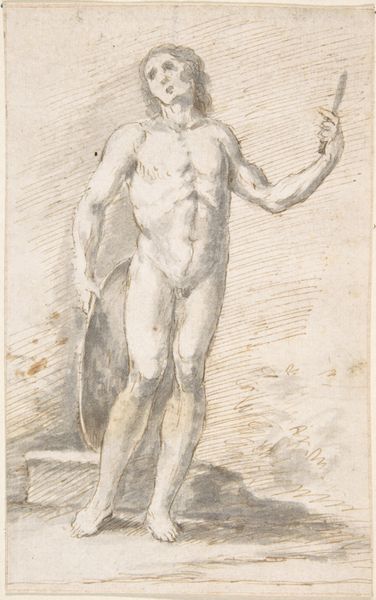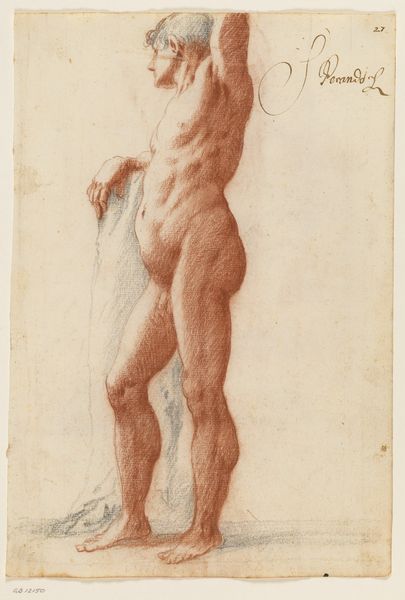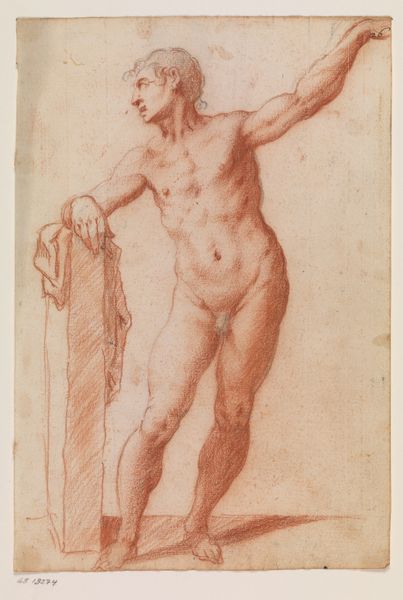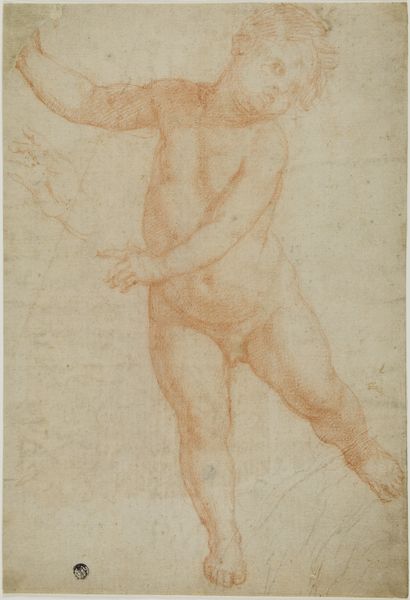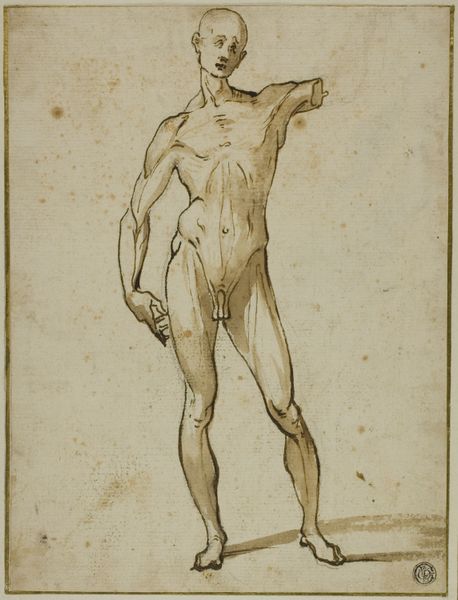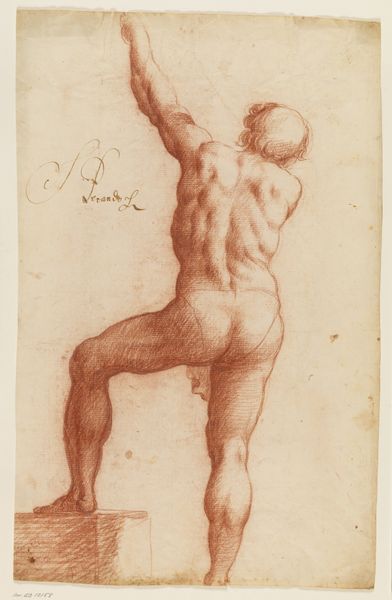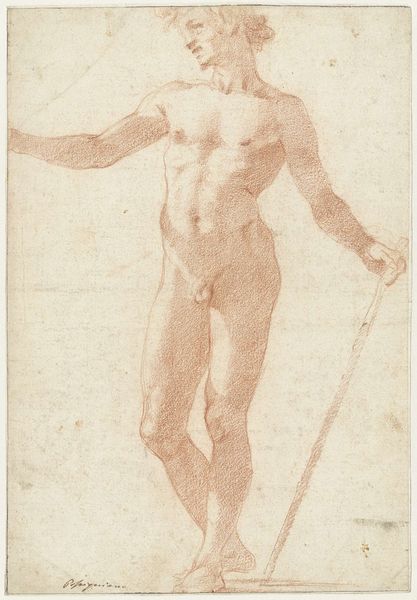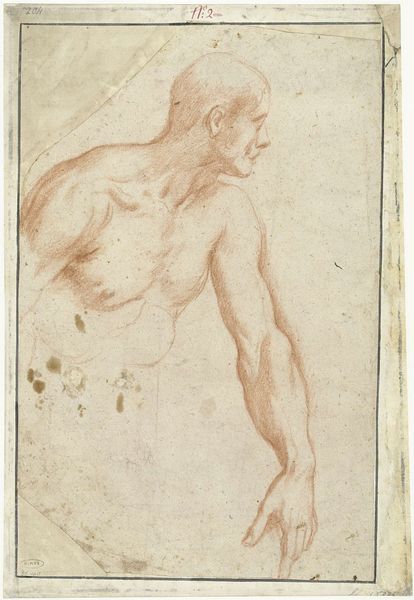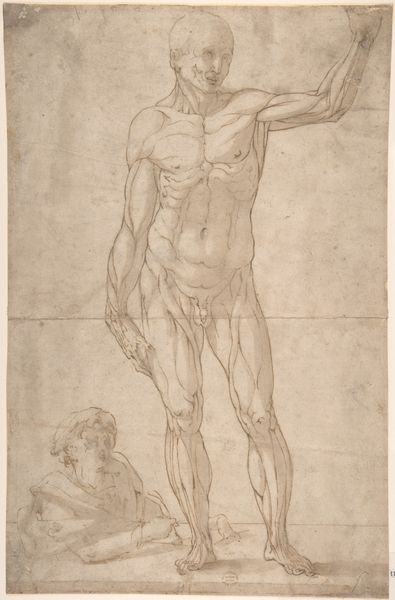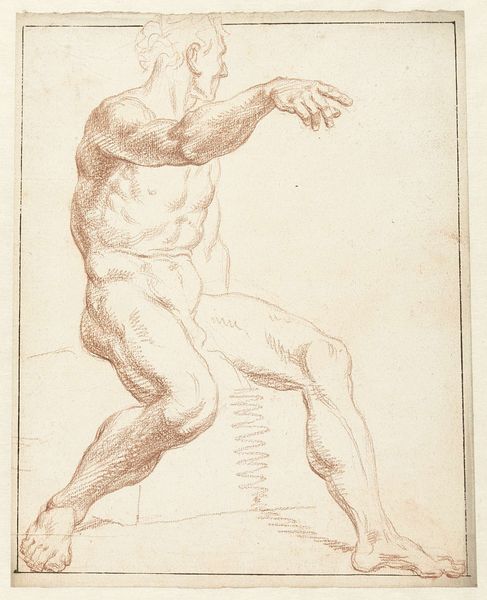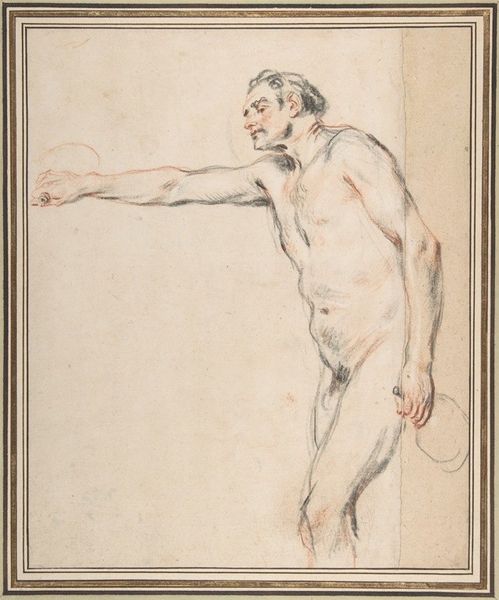
drawing, carving, dry-media, pencil
#
portrait
#
drawing
#
carving
#
charcoal drawing
#
figuration
#
11_renaissance
#
dry-media
#
pencil
#
academic-art
#
nude
Dimensions: height 401 mm, width 317 mm
Copyright: Rijks Museum: Open Domain
Augustinus Terwesten created this red chalk drawing of a standing male nude in the late 17th or early 18th century. Terwesten, who lived between 1649 and 1711, worked within artistic and social structures that valued classical ideals of beauty, proportion, and the nude form. During this period, the male nude was both an aesthetic object and a symbol of power, valor, and virtue. In the context of Dutch art, known for its genre scenes and portraits, Terwesten's classical nudes reflect his time spent abroad where he was exposed to Italian and French artistic traditions. His position as court painter also influenced his practice and would have determined the subjects he drew. Consider the tension inherent in representing the male body in this way. The nude is both vulnerable and powerful, embodying a specific standard of white, masculine beauty. The gaze directed upward and away may evoke a sense of longing. Terwesten's drawing compels us to consider the complex, shifting meanings of the nude and its relationship to identity, power, and desire.
Comments
No comments
Be the first to comment and join the conversation on the ultimate creative platform.
